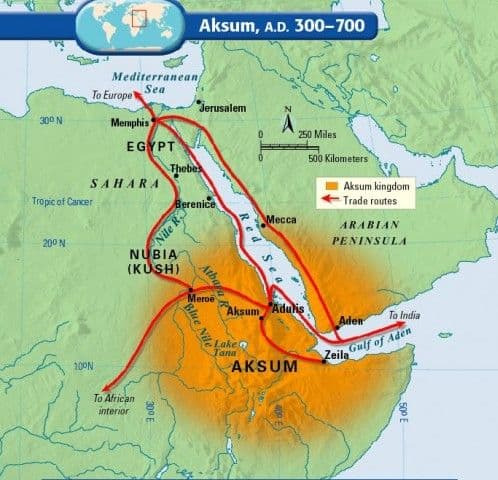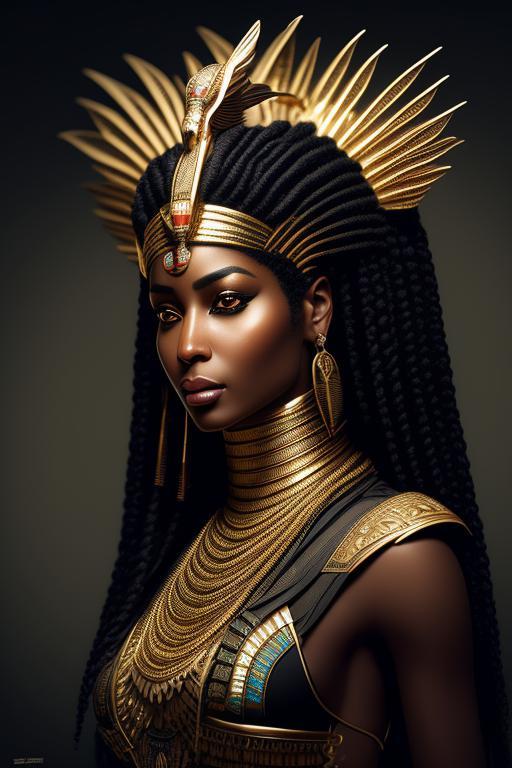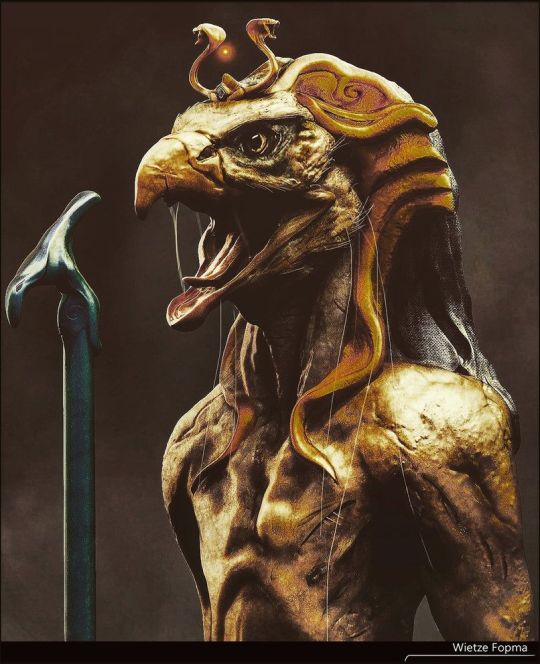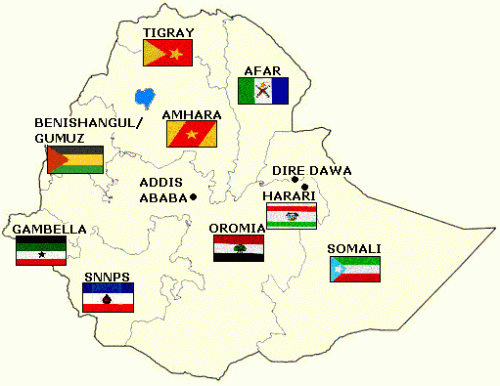#Aksum’s
Explore tagged Tumblr posts
Text
Dromrtjisw who ahvmet wants DRTD$ Encinitas Kendall o fthese is Real?!
This si an ai alter ego bolg for mid journey to scarape
#tumblr polls#wait should I ptu this in the maIN tag#domes ai encn Check drdt#if anyone’s against ti I’ll d’étés it#Aksum’s#actually nevejrmd
2 notes
·
View notes
Photo

Kingdom of Abyssinia
The Kingdom of Abyssinia was founded in the 13th century CE and, transforming itself into the Ethiopian Empire via a series of military conquests, lasted until the 20th century CE. It was established by the kings of the Solomonid dynasty who, claiming descent from no less a figure than the Bible's King Solomon, would rule in an unbroken line throughout the state's long history. A Christian kingdom which spread the faith via military conquest and the establishment of churches and monasteries, its greatest threat came from the Muslim trading states of East Africa and southern Arabia and the migration of the Oromo people from the south. The combination of its rich Christian heritage, the cult of its emperors, and the geographical obstacles presented to invaders meant that the Ethiopian Empire would be one of only two African states never to be formally colonised by a European power.
Origins: Axum
The Ethiopian Highlands, with their reliable annual monsoon rainfall and fertile soil, had been successfully inhabited since the Stone Age. Agriculture and trade with Egypt, southern Arabia, and other African peoples ensured the rise of the powerful kingdom of Axum (also Aksum), which was founded in the 1st century CE. Flourishing from the 3rd to 6th century CE, and then surviving as a much smaller political entity into the 8th century CE, the Kingdom of Axum was the first sub-Saharan African state to officially adopt Christianity, c. 350 CE. Axum also created its own script, Ge'ez, which is still in use in Ethiopia today.
Across this Christian kingdom, churches were built, monasteries founded, and translations made of the Bible. The most important church was at Axum, the Church of Maryam Tsion, which, according to later Ethiopian medieval texts, housed the Ark of the Covenant. The Ark, meant to contain the original stone tablets of the Ten Commandments given by God to Moses, is supposed to be still there, but as nobody is ever allowed to see it, confirmation of its existence is difficult to achieve. The most important monastery in the Axum kingdom was at Debre Damo, founded by the 5th-century CE Byzantine ascetic Saint Aregawi, one of the celebrated Nine Saints who worked to spread Christianity in the region by establishing monasteries. The success of these endeavours meant that Christianity would continue to be practised in Ethiopia right into the 21st century CE.
The kingdom of Axum went into decline from the late 6th century CE, perhaps due to overuse of agricultural land, the incursion of western Bedja herders, and the increased competition for the Red Sea trade networks from Arab Muslims. The heartland of the Axum state shifted southwards while the city of Axum fared better than its namesake kingdom and has never lost its religious significance. In the 8th century CE, the Axumite port of Adulis was destroyed and the kingdom lost control of regional trade to the Muslims. It was the end of the state but not the culture.
Continue reading...
160 notes
·
View notes
Text
February Progress Report 1
The new progress report is out, here's what's been cooking so far!
Also, happy Black History month!
One of Jelaytha’s inspirations came in the form of the Aksumite Empire, of which we know precious little.

It was one of the four great powers of the time, standing side by side with the Roman Empire, the Sassanian Empire, and the various Imperial Chinese dynasties that came about in the span of 700 years.

Like the Island Kingdom of Jelaytha, the Aksumite Empire was one of the major gateways between continents. They controlled the trade that flowed between the Romans and the Indian subcontinent, and were exposed to many different sciences, ideas, and cultures.

Aksum also became the first African nation to embrace Christianity as a state religion, which also had the consequence of no longer constructing the famous obelisks they are known for today.


In time though, after a span of centuries amongst the world’s most powerful and respected empires, it fell thanks to its isolated position. You could even see it as an island oasis in the middle of the Saharan Desert, which is most certainly how I see them. Once the rising Muslim Caliphates cut the empire off from the Mediterranean with their conquest of Egypt, the flow of trade shriveled up, leading to an inability to keep such a complicated system of government going.

And by then, the soil degradation and soil overuse further contributed to a weaking of the central government.
In my own personal opinion, if looked at in comparison to one of the Bronze Age Empires, you can see similarities in the reasons why those states and Aksum fell.
I’ve always been fascinated by Aksum, as with the Minoan Kingdom of Crete (the two main inspirations for Jelaytha, plus Islamic Spain). They have this allure, of being important parts of history yet still shrouded in mystery.
In Kingdoms and Empires, Princess Amina will have to try and save her kingdom once shit hits the fan, and you’ll be able to aid or screw her over. The Jelaythan Kingdom, pioneers of progress, science, and culture… will you bury them in the sand, or will you extend a hand? The choice will be yours once we reach it, and depending on your goals; it’ll be worth it for either outcome.
#interactive fiction#choice of games#black history month#aksum#hosted games#interactive novel#if wip#choicescript#kingdomsandempires
82 notes
·
View notes
Text
History Memes #60

If you can think of any others, feel free to add
I would add the Zulu empire, the city of Zimbabwe and the Sokoto Caliphate
#history#funny humor#history memes#funny memes#funny#humor#meme humor#africa#african history#African kingdoms#African empires#ancient egypt memes#ancient egypt#Mali#Mali empire#aksum#Aksumite empire
28 notes
·
View notes
Text

Almaqah or Almuqh was the Moon god of the ancient Yemeni kingdom of Saba'. He was also worshipped in Dʿmt and Aksum in Ethiopia and Eritrea.

Almaqah is considered a moon god, but Garbini and Pirenne have shown that the bull's head and the vine motif associated with him may have solar and dionysiac attributes. He was therefore a priest of Ra, the male counterpart of the sun goddess Shamash / Ishtar / Isis, who was also venerated in Saba, but as a tutelary goddess of the royal Egyptian dynasty



The ruling dynasty of Saba' regarded themselves as his seed.Almaqah is represented on monuments by a cluster of lightning bolts surrounding a curved, sickle-like weapon. Bulls were sacred to him.

Ethiopia is dedicated to the lunar God Almaqah, and contains an altar which represents a miniature model of the Great Temple in Yeha.


#african#afrakan#kemetic dreams#africans#brownskin#brown skin#afrakans#african culture#afrakan spirituality#almaqah#aksum#moon#moon diety#Amun ra#ra#egyptian#ancient kemet#kemeticism#kemet#kemetic paganism#kemetism#kemetic#sons of kemet#thoth#egyptology#ancient egypt#tigray#amhara#ethiopian#d'mt
151 notes
·
View notes
Text

Oltre 1.500 anni fa, questa chiesa fu scavata in una parete rocciosa verticale a 650 piedi sopra il suolo ed è ancora in uso oggi. Un filo di chiese in luoghi sorprendenti. Sotto il re Asana la sua terra Aksum - (oggi Etiopia ed Eritrea)
42 notes
·
View notes
Text
ANCIENT AFRICA & THE KINGDOM OF KUSH
Ancient African Kingdoms: A Captivating Guide to Civilizations of Ancient Africa Such as the Land of Punt, Carthage, the Kingdom of Aksum, the Mali Empire, and the Kingdom of Kush
CLICK THE TITLE TO DOWNLOAD FOR FREE

ANCIENT AFRICAN KINGDOMS & THE KINGDOM OF KUSH
CLICK THE TITLE TO DOWNLOAD FOR FREE
Ancient Africa: A Captivating Guide to Ancient African Civilizations, Such as the Kingdom of Kush, the Land of Punt, Carthage, the Kingdom of Aksum, and the Mali Empire with Its Timbuktu
The Kingdom of Kush: A Captivating Guide to an Ancient African Kingdom in Nubia That Once Ruled Egypt
Africa is the continent where the first humans were born. They explored the vast land and produced the first tools. And although we migrated from that continent, we never completely abandoned it. From the beginning of time, humans lived and worked in Africa, leaving evidence of their existence in the sands of the Sahara Desert and the valleys of the great rivers such as the Nile and the Niger.
Some of the earliest great civilizations were born there, and they give us an insight into the smaller kingdoms of ancient Africa.
Some of the topics covered in part one of this book include:
The Kingdom of Kush
The Land of Punt
Carthage
The Kingdom of Aksum
The Ghana Empire
The Mali Empire
And much, much more!
Some of the topics covered in part two of this Book include:
Nubia and the emergence of the Kingdom of Kush
From Alara to the Twenty-Fifth Dynasty
The rulers of the Twenty-Fifth Dynasty
Relations between Kush and Egypt continue
Kush between the sixth and third centuries
The Meroitic Dynasty
The last centuries of the Kingdom of Kush
The society of Kush
And much, much more!
Ancient African Kingdoms: A Captivating Guide to Civilizations of Ancient Africa Such as the Land of Punt, Carthage, the Kingdom of Aksum, the Mali Empire, and the Kingdom of Kush
CLICK THE TITLE TO DOWNLOAD FOR FREE
This book is a FREE Download from THE BLACK TRUEBRARY
#ANCIENT AFRICA & THE KINGDOM OF KUSH#Kush#Ancient Africa#African History#THE BLACK TRUEBRARY#Download Free Books#Free Books#Ancient African Kingdoms: A Captivating Guide to Civilizations of Ancient Africa Such as the Land of Punt#Carthage#the Kingdom of Aksum#the Mali Empire#the Kingdom of Kush#KUSH
21 notes
·
View notes
Photo

The kingdom of Aksum, 5th century.
by LegendesCarto
69 notes
·
View notes
Text

Illuminated Manuscript. Ethiopian. 14 or 15th century CE. Written in the Geez language. Inspired by Byzantine style but incorporating the local Amhara culture.
Housed in the Metropolitan Museum of Art in New York.
#art#culture#literature#geez#ethiopia#amhara#aksum#african history#early modern period#early modern history#the metropolitan#the met#the metropolitan museum of art#religious history#history
12 notes
·
View notes
Text
The honorable Negus of She-ako, master of Hudh, sovereign of the straits, father of frankincense, blessed by the father-god, requests your presence!
This is a worldbuilding post for a kingdom in my late antiquity-inspired old school D&D setting King of Kings, told almost entirely through evocative rumors, character backgrounds, and more! Check it out if you wanna!
11 notes
·
View notes
Text
I and a few familiar friends now run a small server devoted to the Lion Hunters series by Elizabeth Wein! We would love to hang out with you there as well as here. Join us for:
spoiler-free zones for new readers
full series (and short stories) discussion and a place to yearn for The Sword Dance
enthusiasm and support for fanworks and really anything Lion Hunters
somewhat-regular group Read Aloud nights - we’re nearly done with A Coalition of Lions, so it’s The Sunbird next!
#hello!#come along if you so choose#to lurk or talk or listen … it’s all good#the lion hunters#Elizabeth Wein#the winter prince#a coalition of lions#arthuriana#Mordred#Medraut#all the Popular Tags#the sunbird#the mark of solomon#LH server#LH#aksum#axum
23 notes
·
View notes
Text
Ezana Stone: An Ancient Stele Still Standing In Modern-Day Axum
The Ezana Stone stands as an enduring testament to the remarkable history of the ancient Kingdom of Aksum, located in modern-day Axum, Ethiopia. This magnificent stele, believed to date back to the 4th century AD, holds within its weathered surface the story of King Ezana’s profound conversion to Christianity and his triumphant expansion of the kingdom’s territories. During his reign from AD 330…

View On WordPress
10 notes
·
View notes
Photo

The Kingdom of Kush
Kush was a kingdom in northern Africa in the region corresponding to modern-day Sudan. The larger region around Kush (later referred to as Nubia) was inhabited c. 8,000 BCE but the Kingdom of Kush rose much later. The Kerma Culture, so named after the city of Kerma in the region, is attested as early as 2500 BCE and archaeological evidence from Sudan and Egypt show that Egyptians and the people of Kush region were in contact from the Early Dynastic Period in Egypt (c. 3150 - c. 2613 BCE) onwards. The later civilization defined as 'Kushite' probably evolved from this earlier culture but was heavily influenced by the Egyptians.
While the history of the overall country is quite ancient, the Kingdom of Kush flourished between c. 1069 BCE and 350 CE. The New Kingdom of Egypt (c. 1570-1069 BCE) was in the final stages of decline c. 1069 BCE, which empowered the Kushite city-state of Napata. The Kushites no longer had to worry about incursions into their territory by Egypt because Egypt now had enough trouble managing itself. They founded the Kingdom of Kush with Napata as its capital, and Kush became the power in the region while Egypt floundered.
Kushite kings became the pharaohs of Egypt's 25th Dynasty and Kushite princesses dominated the political landscape of Thebes in the position of God's Wife of Amun. The Kushite king Kashta (c. 750 BCE) was the first to establish himself on the Egyptian throne and appointed his daughter, Amenirdis I, the first Kushite God's Wife of Amun. He was followed by other great Kushite kings who reigned until the Assyrian invasion of Egypt by Ashurbanipal in 666 BCE.
In c. 590 BCE Napata was sacked by the Egyptian pharaoh Psammeticus II (595-589 BCE) and the capital of Kush was moved to Meroe. The Kingdom of Kush continued on with Meroe as its capital until an invasion by the Aksumites c. 330 CE which destroyed the city and toppled the kingdom. Overuse of the land, however, had already depleted the resources of Kush and the cities would most likely have been abandoned even without the Aksumite invasion. Following this event, Meroe and the dwindling Kingdom of Kush survived another 20 years before its end c. 350 CE.
Sponsorship Message
This article was sponsored by Total War™
Total War: ROME II – Desert Kingdoms is a Culture Pack DLC released on March 8th, 2018. Pre-order now to get 10% off. Full faction details available on Steam. Learn More
.sponsor.ca h3 { text-transform: none; margin-top: 0px; margin-bottom: 15px; font-family: "Libre Baskerville", "Palatino Linotype", "Book Antiqua", Palatino, serif; } .sponsor.ca .ca_logo { width: 100px !important; height: 46px; float: right; box-shadow: none; margin: 0; } .sponsor_message { margin-left: 280px; font-family: Karla, Arial, Helvetica, sans-serif; line-height: 140%; } .sponsor.ca { padding: 10px 0px 25px 0px; margin: 25px 0px; border-top: 1px dotted #dadada; border-bottom: 1px dotted #dadada; } .sponsor_message .big_red_button { margin-top: 13px; } .sponsor.ca .key_art { margin-top: 0px; margin-bottom: 10px; width: 260px; height: auto; float: left; } .sponsor h4 { font-weight: normal; text-transform: uppercase; color: silver; margin-bottom: 10px; margin-top: 0px; font-family: Karla,Arial,Helvetica,sans-serif; font-size: 13px; padding: 0; } @media (max-width: 1199px) { .sponsor.ca .key_art { float: none; width: 100%; } .sponsor.ca .sponsor_message { margin-left: 0px; } .sponsor.ca h3 { margin-top: 20px; margin-bottom: 10px; } } @media (max-width: 767px) { }
Continue reading...
26 notes
·
View notes
Text

#Imperialists#Melanin#Africa#African History#Neo Colonialists#Feudalists#Black Economics#Melanated#United Africa#Unity Among Ghetto Groups#African Unity#Berlin Conference#Dr Neely Fuller Jr#Replace White Supremacy#Black Unity#Blackamoor#Sitting Bull#Arawak#Taino#Olmec#Mayans#Queen Nzinga#Aksum Civilization#Black Family Imagery#Black Panther Party For Self Defense#Black Liberation Army#1800s#Caribbean#Garifuna#Obstructive Picketing
6 notes
·
View notes
Text
I want to play Civ 7 so so badly. I’ve been watching videos of the early access and trying to decide which leader and what civilisation I want to play first. Like I actually dreamed about playing it last night lmao
2 notes
·
View notes
Text
Tut bir ucundan kederimin, telaşsız Sus, her söz anlamsız Bir şefkatli dokunuş yeter
Üşüdüm, üşüdüm, üşüdüm gel Havalar çok sert buralarda Üşüdüm, üşüdüm, üşüdüm gel Azıcık ısınayım aralarda
youtube
Baharıma kış geldi aniden Yeşeremedim bu sene Geceler yastığımda karabasan Beceremedim desene
Gel, dualarımı al Tutunduğum son dal Bir nefesin kâfi Budur, hepsi bu kadar
#sezenim aksum#sezen aksu#üşüdüm#27#aralık#2024#yeni şarkı#demo 2#söz & müzik : sezen aksu#türkçe#pop#müzik#“Yeni Yılda Birlik Olalım#Dünyaya Akıl Almaz#Bir Şey Getirelim.”#gece#minik serçe#kraliçe#12.27.2024#Youtube
3 notes
·
View notes